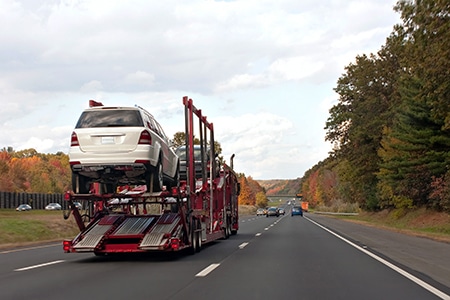Acquiring a vehicle from the United States can be an appealing option for Canadian car enthusiasts. However, the process involves navigating through various regulations and procedures. This guide aims to provide a thorough understanding of the steps involved in importing a car from the USA to Canada.
Determining Vehicle Admissibility
Before embarking on the import process, it’s crucial to ensure that your desired vehicle meets Canadian admissibility standards. Factors such as the vehicle’s age, emissions compliance, and safety requirements are taken into account.
| Factor | Requirement |
| Vehicle Age | Generally, vehicles 15 years or newer are eligible for import. |
| Emissions Standards | The vehicle must comply with Canadian emissions regulations. |
| Safety Standards | The vehicle must meet Canadian safety standards (e.g., daytime running lights). |
Obtaining the Necessary Documentation
Importing a vehicle requires a variety of documents to be in order. These include:
- Original vehicle ownership documents (e.g., title, registration)
- Valid vehicle identification number (VIN)
- Proof of purchase (e.g., bill of sale)
- Vehicle import form (Form 1)
- Emissions compliance documentation
Ensuring you have all the necessary paperwork in order is crucial. Incomplete or missing documents can lead to delays or even denial of import.
Arranging Transportation and Customs Clearance
Once the vehicle is deemed admissible and the documentation is in order, the next step involves arranging transportation and clearing customs. There are several options for transporting the vehicle, including:
- Hiring a professional auto transport company
- Driving the vehicle across the border yourself
- Utilizing a freight shipping service
Upon arrival at the Canadian border, you’ll need to present the required documentation and pay applicable fees and taxes. This includes:
- Goods and Services Tax (GST)
- Provincial Sales Tax (PST) or Harmonized Sales Tax (HST)
- Air Conditioning Tax (if applicable)
- Import fees (e.g., anti-dumping duties, if applicable)
It’s important to work with a reputable customs broker. They can guide you through the process and ensure compliance with all regulations. Car From The USA To Canada
Modifying the Vehicle for Canadian Standards
In some cases, modifications may be necessary to bring the imported vehicle into compliance with Canadian safety and emissions standards. Common modifications include:
- Installing daytime running lights
- Updating emissions control systems
- Adjusting headlight aim and brightness
- Installing compliant safety equipment (e.g., rear view mirrors, seatbelts)
These modifications should be completed by a certified mechanic or authorized facility. Proper documentation and invoices must be kept as proof of compliance.
Registering and Insuring the Imported Vehicle
Once the vehicle is compliant with Canadian standards, the final step is to register and insure it within your province or territory. This typically involves:
- Providing proof of ownership and import documents
- Paying registration fees and taxes
- Obtaining vehicle insurance coverage
- Completing a safety inspection (if required)
It’s important to work closely with your provincial or territorial transportation authority. They can guide you through the specific requirements and ensure a smooth registration process. Car Shipping Company
Additionally, it’s important to factor in the time required for the import process. Depending on the situation, it can take several weeks or even months to complete all the necessary steps.

